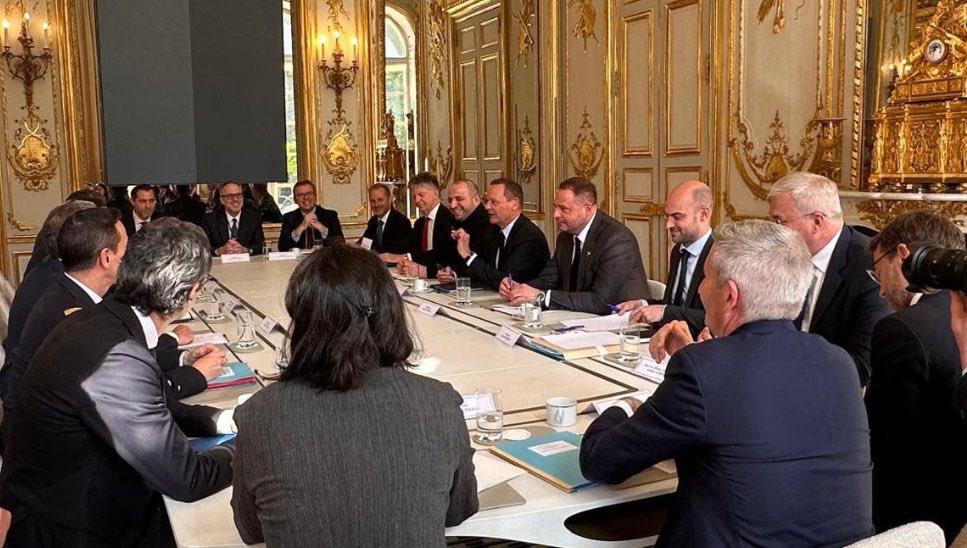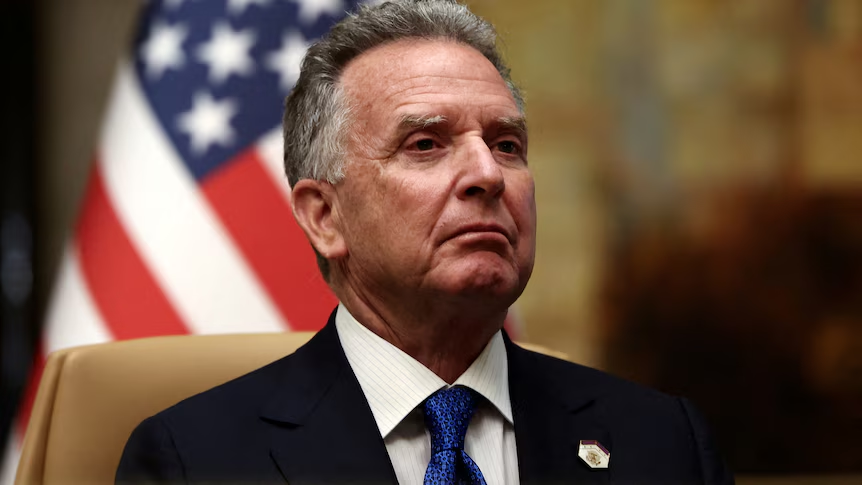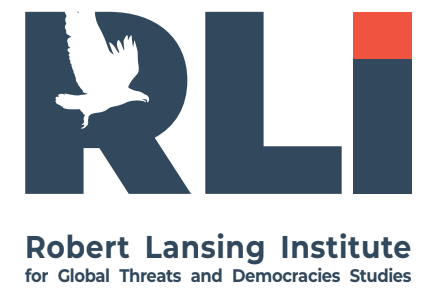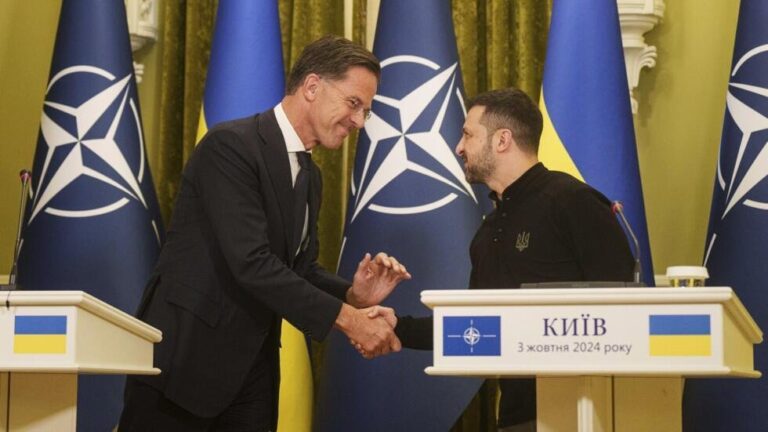Ukraine’s aspiration to join NATO has long been a focal point in the Euro-Atlantic security debate. While the 1949 North Atlantic Treaty (Washington Treaty) clearly states that any European country sharing NATO’s democratic values and willing to contribute to collective security may apply, Ukraine’s candidacy has faced political roadblocks — especially from within the Alliance, under pressure from non-member states like Russia.
II. Legal Framework: What the Washington Treaty Actually Says
The Washington Treaty (Article 10) allows:
“The Parties may, by unanimous agreement, invite any other European State in a position to further the principles of this Treaty and to contribute to the security of the North Atlantic area to accede to this Treaty.”
Key points:
- No mention of third-party (non-member) veto power.
- The decision is made by consensus among current members based on internal NATO values — democracy, rule of law, and readiness to contribute to security.
- Therefore, Russia has no legal standing to influence or obstruct NATO enlargement under international law or the Treaty.
Rejecting Ukraine due to external threats or pressure violates the founding logic of NATO — which exists precisely to resist such coercion.
III. Why Blocking Ukraine is Legally and Morally Illegitimate
- Violation of Sovereignty and Self-Determination
- Ukraine has a sovereign right to choose its alliances under international law (UN Charter, Helsinki Final Act).
- NATO refusing Ukraine under Russian pressure legitimizes coercion and sets a dangerous precedent.
- Undermining the Open-Door Policy
- The Open Door Policy is not optional rhetoric — it’s a formal commitment reaffirmed repeatedly by NATO summits.
- Blocking Ukraine would create a two-tier system of European states: those free to join and those hostage to third-party threats.
- Rewarding Aggression
- Refusing Ukraine under Russian threat effectively rewards Moscow’s military blackmail, undermining NATO’s own deterrent credibility.
IV. Strategic Consequences for NATO
- Collapse of Deterrence Credibility
- If NATO shows it can be intimidated, authoritarian regimes worldwide will question the value of Western security guarantees.
- Eastern European states will feel abandoned and vulnerable — opening the door for instability or realignment.
- Fracturing of the Alliance
- Central and Eastern European members may lose faith in the Alliance’s integrity, undermining collective solidarity and sparking internal divisions.
- Devaluation of NATO as a Security Brand
- NATO is seen as the gold standard of security.
- Failing to protect willing and democratic applicants undermines global confidence in Western institutions, which benefits authoritarian competitors like Russia and China.
V. Trump’s NATO Policy: A Direct Threat to Alliance Integrity
Former President Donald Trump has:
- Repeatedly questioned Article 5mutual defense commitments.
- Threatened to withdraw from NATO entirely.
- Suggested NATO membership should depend on financial contributions, not strategic unity or values.
- Proposed that Ukraine should be denied membership to “appease” Russia or avoid World War III.
These stances are dangerous because:
- They transform NATO into a transactional alliance — killing its foundational trust.
- They enable Russian strategic narratives, claiming NATO is an aggressor or irrelevant.
- They signal weakness, encouraging adversaries to test NATO’s red lines.
VI. Simulation Scenarios
| Scenario | Description | Consequences |
| 1. Ukraine Joins NATO with Full Consensus (Post-War) | Ukraine meets democratic, military, and territorial criteria. All allies agree. | Russia may escalate, but NATO’s credibility is reinforced. Long-term deterrence restored. |
| 2. Ukraine Rejected Due to Russian Threats | NATO delays or blocks Ukraine to avoid provoking Russia. | Major blow to NATO unity. Eastern members destabilized. Russia emboldened. |
| 3. Trump Reelected, Pushes U.S. Exit or Freeze | Trump threatens to pull U.S. out or halt further enlargement. | NATO splinters. EU may attempt its own defense bloc. Russian and Chinese global influence grows. |
| 4. Hybrid Membership (Non-Article 5) | Ukraine gets close alignment (weapons, training, intelligence) without Article 5 guarantees. | Partial deterrence. May not satisfy Ukraine. Keeps NATO formally intact but risks ambiguity. |
VII. Conclusion: Upholding NATO’s Integrity Means Admitting Ukraine
Ukraine’s path to NATO is more than a technical process — it is a test of whether the Alliance can live up to its legal commitments, moral values, and strategic mission in the 21st century.
Rejecting Ukraine based on Russian pressure:
- Is legally indefensible.
- Destroys the principle of sovereign alliance choice.
- Weakens NATO from within, especially under Trump-like leadership.
Conversely, welcoming Ukraine (even gradually) under NATO’s rules:
- Reaffirms the Open Door principle.
- Strengthens Eastern European confidence.
- Sends a message that aggression will not be rewarded, but contained.
Historical Precedents of U.S. Presidents Opposing or Delaying NATO Expansion
1. France and the Re-integration Debate (1960s–2009)
- Context: France withdrew from NATO’s integrated military command in 1966 under President de Gaulle but remained a political member.
- U.S. Stance: While the U.S. never denied France’s role, Washington was cautious about French reintegration in the 1990s and early 2000s.
- Not a direct block, but an example of a strategic debate over internal balance.
2. Georgia and Ukraine (2008 – Bucharest Summit)
- President: George W. Bush supported Membership Action Plans (MAPs) for both countries.
- Opposition: Germany and France, under pressure from Russia, blocked it.
- U.S. Role: While Bush was supportive, Obama later downplayed enlargement, and Trump actively discouraged Ukraine’s NATO aspirations.
3. North Macedonia (before 2020)
- Issue: Greece blocked Macedonia’s NATO bid over a name dispute.
- U.S. Role: Multiple U.S. administrations supported Macedonia’s membership but avoided direct confrontation with Greece, thus delaying the process for over a decade.
- Diplomatic balancing, not outright rejection.
4. Turkey-Cyprus Issue
- Turkey blocked Cyprus’s closer NATO cooperation due to political disputes.
- U.S. administrations avoided directly forcing the issue to preserve NATO cohesion.
- This de facto blocked Cyprus, though again not an official U.S. veto.
5. Trump’s Ukraine Stance (2018–2020, and 2024 campaign)
- Unique Case: Trump openly stated:
- Ukraine should never join NATO.
- U.S. should consider withdrawing from NATO entirely.
- Alliances should depend on financial contributions, not values or security needs.
- This is the closest the U.S. has come to violating the Washington Treaty’s spirit by suggesting a third party (Russia) should have de facto veto power.
While the U.S. has delayed or maneuvered around NATO expansion for diplomatic or internal alliance reasons, Trump’s rejection of Ukraine’s NATO membership under Russian pressure stands out as a radical break from precedent. It is the first clear case of a U.S. president advocating surrender of NATO’s open-door principle to a hostile power’s demands — making it historically and legally unprecedented.
1. Long-Term Consequences for Global Security Architecture
- Erosion of Alliance Credibility: If NATO denies Ukraine due to Russian pressure, it sets a dangerous precedentthat future membership depends on approval by adversaries.
- Impact on Future Candidates: Moldova, Georgia, Bosnia, and even Finland/Sweden (despite their recent progress) might face renewed pressure or questioning of their rights.
- Message to Autocracies: It shows authoritarian regimes that military aggression can reshape international borders and alliances — undermining the post-WWII legal order.
2. Damage to the Norm of Sovereign Equality
- According to Article 10 of the NATO Treaty and the Helsinki Final Act (1975), all states have the right to choose their alliances.
- By accepting Russia’s veto, the U.S. violates that norm, which undermines global trust in international law and U.S. leadership.
3. Strategic Risks for the United States
- If the U.S. abandons Ukraine’s NATO aspirations, it decreases American leverage in Eastern Europe while increasing dependency on Russian gas and Chinese influence.
- It also jeopardizes trust with other allies, like Poland, the Baltic states, or Romania, who may question the U.S. commitment to regional defense.
4. Potential for Escalation Instead of Stability
- Contrary to Trump’s belief that sacrificing Ukraine brings peace, the opposite may occur:
- Russia may be emboldened to act elsewhere (Moldova, Kazakhstan, Baltic hybrid warfare).
- The war doesn’t end — it metastasizes, because the aggressor sees rewards, not resistance.
5. Undermining of Peace Diplomacy
- By recognizing occupied territories as Russian, the U.S. effectively kills the Minsk and Geneva processes, removes incentive for negotiations, and locks in occupation.
- This also emboldens other occupation forces globally: Israel-Palestine, Kashmir, Cyprus, South China Sea disputes.
6. Psychological & Symbolic Impact
- The Ukrainian people — who have overwhelmingly turned toward Europe and NATO — will feel betrayed.
- The message to the world is: democracy doesn’t protect you, even if you fight and die for it.
7. Russian Strategic Doctrine
- Russia’s 2021–2023 military doctrines explicitly state that stopping NATO enlargement is a core strategic goal.
Trump’s proposal delivers that goal without Russia firing a shot, which would be seen as a massive victory in Russian strategic circles.



Consequences for Poland and the Baltic States if Ukraine is Rejected from NATO
🛡 1. Increased Security Vulnerability
- Strategic Exposure: Without Ukraine in NATO, Russia retains a land corridor toward Central Europe — increasing the risk of pressure on Poland, Slovakia, and Hungary.
- Kaliningrad + Belarus Axis: NATO’s eastern flank becomes more encircled, with Russian military infrastructure already strong in:
- Kaliningrad (missiles, nuclear-capable systems)
- Belarus (hosting Russian troops, staging point for invasions)
- Occupied Ukraine (potential southern flank pressure)
For Poland and the Baltics, Ukraine is a critical buffer. If it’s left out, NATO loses strategic depth.
⚔️ 2. Escalated Hybrid Warfare
- Russia could intensify:
- Disinformation campaigns
- Cyberattacks on Polish and Baltic infrastructure
- Provocations along borders (as seen with migrant weaponization on the Polish-Belarusian border)
- Kremlin may perceive weakness and test NATO’s resolve with “grey zone” tactics.
🧭 3. Undermining Article 5 Confidence
- If Ukraine is abandoned, questions will rise in Warsaw, Tallinn, Riga, and Vilnius:
- Will the U.S. truly honor Article 5?
- Or will strategic ambiguity and “burden-sharing” excuses delay a real defense response?
- NATO credibility is shaken, pushing frontline states to seek bilateral defense pacts or increase their own nuclear deterrent ambitions (a topic already emerging in Polish discourse).
🤝 4. Strategic Realignment and Local Militarization
- Poland may:
- Increase its military budget beyond current 4% of GDP
- Push for more permanent U.S. bases (e.g., Fort Trump concept revived)
- Consider hosting tactical nuclear weapons under NATO sharing
- Baltics may demand:
- More NATO troop presence
- Pre-positioning of heavy weapons
- Expanded air defense capabilities
🕳 5. A Fragmented NATO
- Frontline states may feel abandoned by “Old Europe” and the U.S., fostering:
- Internal distrust within NATO
- Alternative regional defense pacts, like the Bucharest Nine or deeper Baltic-Nordic-Polish alignment
- Direct arms deals with U.S. defense firms, bypassing NATO command
🧨 6. Higher Risk of Miscalculation
- If NATO appears divided and weak, Russia may probe with more force — especially in:
- Suwałki Gap (between Kaliningrad and Belarus)
- Baltic Sea navigation rights
- Airspace violations and naval harassment




